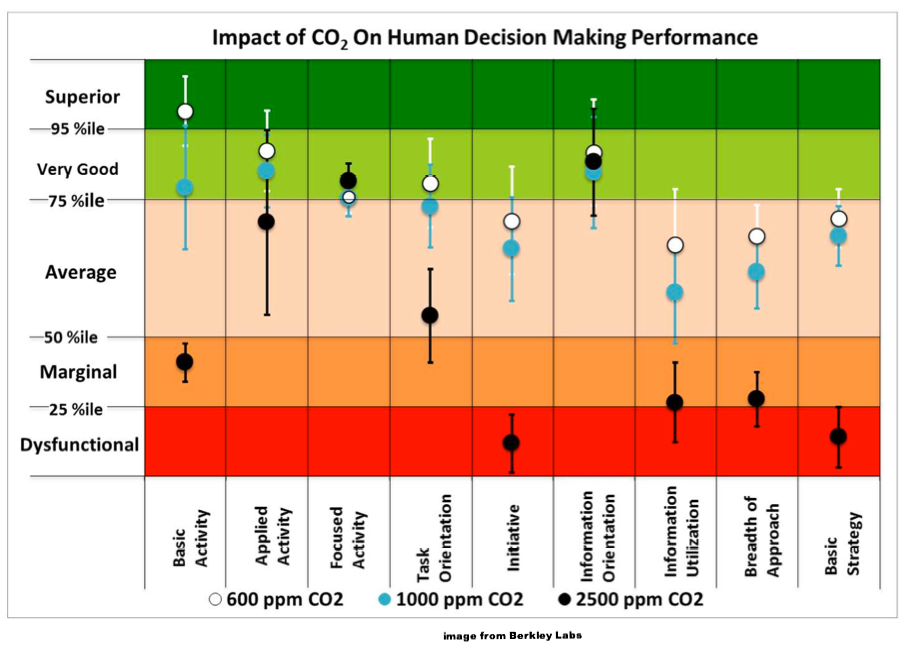The focus of AE Building Systems over the years has been the building envelope. We have concentrated on this specific part of the building with the conviction that most issues related to green building start with a well designed and executed wall assembly. In fact AE has predicated its entire business on this basic idea. While most of our focus has been energy efficiency and comfort, the idea that a building should be healthy has always been assumed. Recently, a couple of events have brought this very important issue to the fore of AE’s thinking. Specifically the idea that occupant comfort is not just related to air temperature, but also the specific content of the air they breathe and the indoor air quality.
The Virtue of Health
A few months ago Jackie Burnett contacted AE, because of her interest in building a Passive House. She was moving from Vermont to Fort Collins and was searching for some land on which to build. In meeting with Jackie it became apparent that her goals of this project were slightly different than the majority of our customers. While energy efficiency and longevity were important, the healthiness of this new home was of most importance. Jackie, like many people, suffers from the debilitating effects of toxic environments. Mold, mildew, high VOC contents, all contribute to symptoms that can leave her bedridden. Jackie’s home not only needs to be free of these poisons, but needs to remain so for the life of the building. Jackie came to AE with very specific needs. She wanted factory produced wall assemblies, products that had little to no VOC content, and systems that provided a healthy indoor air quality. Jackie has helped educate the whole AE staff on the virtues of a healthy building and their effects on occupants. Fortunately AE is in a position to help and we are looking forward to continuing this journey with Jackie.
The Healthy Air Equation
Jackie Burnett feels the real effects of poor indoor air quality and came to AE primarily because of her interest in the CERV (Conditioning Energy Recovery Ventilator). Recently, AE invited Ty Newell from Build Equinox to give a presentation on the CERV. Ty specifically spoke about the benefits of good IAQ. As we build tighter and more energy efficient “a critical shift in thinking from a goal of indoor environments that are acceptable to the occupants to those that are truly healthy and productive” must take place. (Bill Bahnfleth 2013-14 ASHRAE President). We have spent many years researching and perfecting wall assemblies that are air tight, with high insulation values, but can also dry to the outside. This was the obvious solution to homes that were failing do to moisture penetration, resulting in the development of mold and decay. Not only were our construction techniques resulting in short building life cycles, they were also placing building occupants at risk. Tightening a building helps reduce the amount of VOC content allowed to infiltrate a building. Increasing insulation levels help to reduce energy loss and increase comfort. But, without a way to continuously eliminate VOC build up and manage moisture, we are setting a course for continued building failure and risking the long term health of our clients.

The goal of the CERV is to manage these these risks in an energy efficient manner. The CERV continuously monitors indoor air for both CO2 and VOC content. Through it’s interface occupants can set both levels to meet their desired comfort. Taking a hourly sample, the CERV will only bring in fresh air when one or the other of these levels is exceeded. It can’t be overstated the importance of appropriate CO2 levels. Recently, Berkley Labs conducted a study on elevated indoor CO2 levels. They discovered that contrary to previous thought, decision making impairment can start as low as 1,000 PPM of CO2, with significant impairment beginning at 2500 PPM.

The primary source of indoor CO2 is humans. With the adverse effects of CO2 becoming clear and the increased air tightness of buildings being mandated, designing an efficient mechanical fresh air system is now critical to any building plan. Likewise, with VOCs, a precise plan must be made. VOCs can range from smells produced in a home from cooking and other activities, to off gassing of building materials, furniture and even humans. Keeping these toxins at an appropriate level is key to a healthy indoor environment.
The building industry has understood for a while that keeping the humidity levels between 35 and 50% was optimal for building performance. As it it turns out is is also optimal for occupant health. Humidity levels below 25% lead to drying of the mucous membranes and chapping of the skin. Higher humidity levels increase the development of mold and fungi. The CERV maintains humidity levels at those 35 to 50% levels all year around as seen by the graph below.
A healthy building starts with good design and product selection. Making your building tight and with high insulation levels is a good start. In order to maintain the health of the building and the health of the occupants a good fresh air system is critical for the long term functionality of the building. Selecting base building materials and furnishings with low VOC content and low levels of toxins is also a critical point in providing a healthy indoor environment.

AE Building Systems is now providing a variety of mechanical fresh air products that meet the standards discussed above. We are actively researching products to round out our current offerings and expect to offer design services in the near future. By providing a complete Indoor Air Quality package, along with our other products, AE can offer an energy efficient and healthy building envelope. Contact AE Building Systems for more information.

